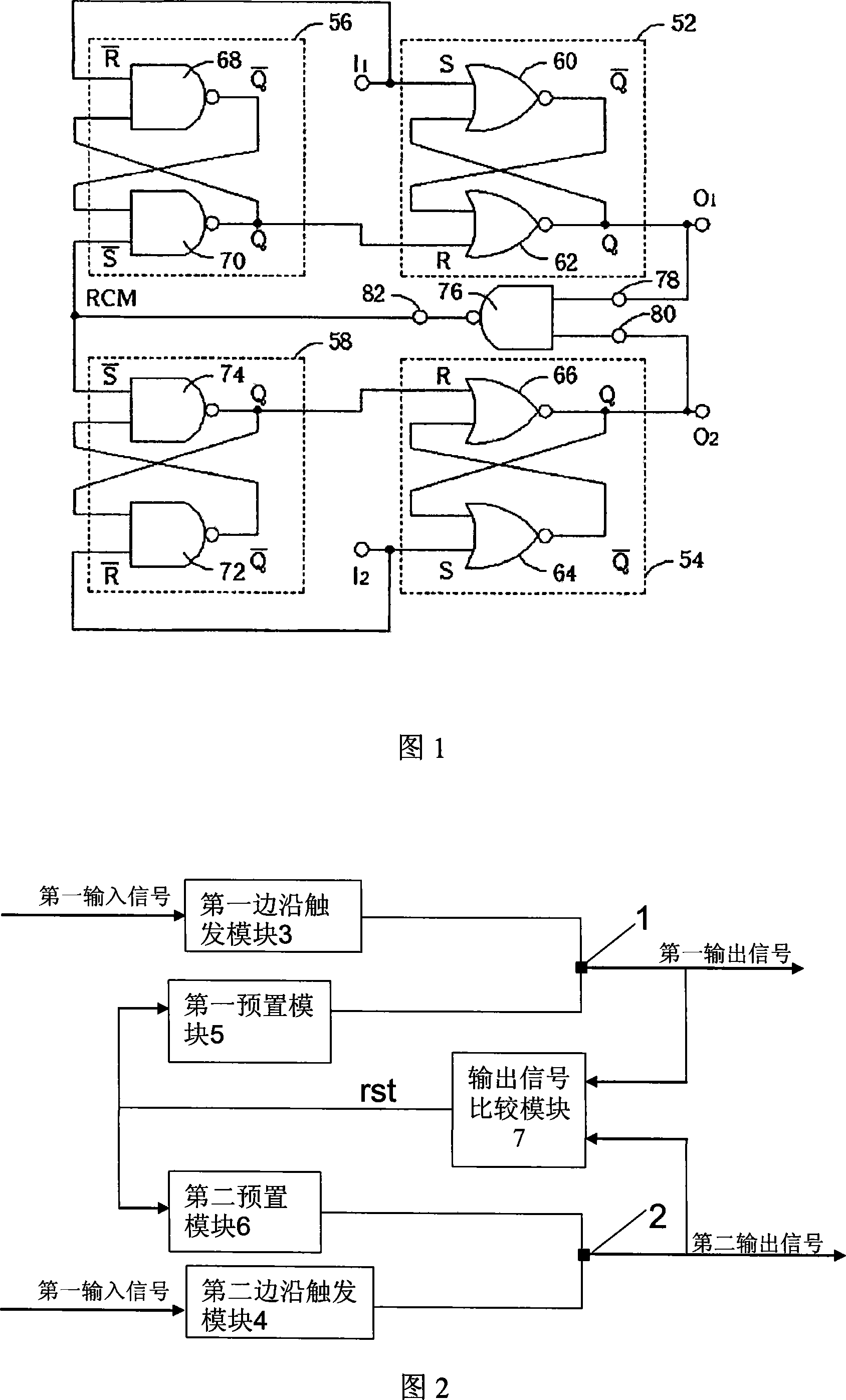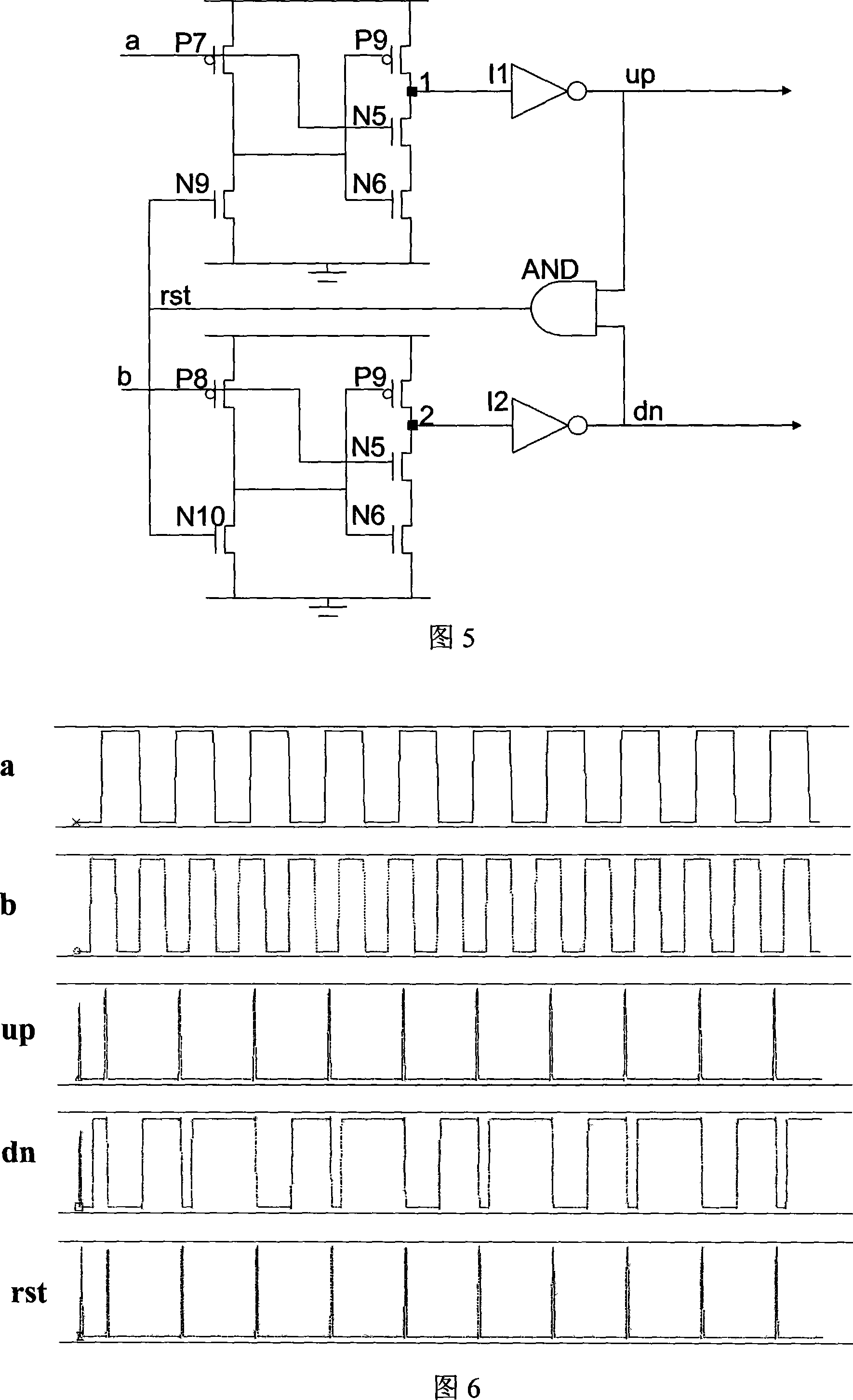Phase frequency discriminator
A phase-frequency discriminator technology, which is applied to frequency measurement devices, mutually independent oscillating circuits, electrical components, etc., can solve problems such as phase-frequency discriminator errors, and achieve reduced chip area, simplified structure, and a small number of tubes Effect
- Summary
- Abstract
- Description
- Claims
- Application Information
AI Technical Summary
Problems solved by technology
Method used
Image
Examples
specific Embodiment approach 1
[0041] As shown in Figure 2, a phase frequency discriminator includes a first edge trigger module 3, a second edge trigger module 4, a first preset module 5, a second preset module 6, a first output node 1, a second output Node 2 and output signal comparison module 7 . The output terminal of the first preset module 5 is electrically connected to the first output node 1, and is used to preset the first output node 1 after receiving the reset signal rst; the output terminal of the second preset module 6 is connected to the second output node 2 is electrically connected to preset the second output node 2 after receiving the reset signal rst. The input terminal of the first edge trigger module 3 is connected to the first input signal a, and the output terminal is electrically connected to the first output node 1, for falling after the first output node 1 is preset and the input first input signal a The first output signal out1 is generated at edge time; the input terminal of the ...
specific Embodiment approach 2
[0053] As shown in Figure 2, a phase frequency discriminator includes a first edge trigger module 3, a second edge trigger module 4, a first preset module 5, a second preset module 6, a first output node 1, a second output Node 2 and output signal comparison module 7 . The output terminal of the first preset module 5 is electrically connected to the first output node 1, and is used to preset the first output node 1 after receiving the reset signal rst; the output terminal of the second preset module 6 is connected to the second output node 2 is electrically connected to preset the second output node 2 after receiving the reset signal rst. The input terminal of the first edge trigger module 3 is connected to the first input signal a, and the output terminal is electrically connected to the first output node 1, for rising after the first output node 1 is preset and the input first input signal a The first output signal out1 is generated at edge time; the input terminal of the s...
PUM
 Login to View More
Login to View More Abstract
Description
Claims
Application Information
 Login to View More
Login to View More - R&D
- Intellectual Property
- Life Sciences
- Materials
- Tech Scout
- Unparalleled Data Quality
- Higher Quality Content
- 60% Fewer Hallucinations
Browse by: Latest US Patents, China's latest patents, Technical Efficacy Thesaurus, Application Domain, Technology Topic, Popular Technical Reports.
© 2025 PatSnap. All rights reserved.Legal|Privacy policy|Modern Slavery Act Transparency Statement|Sitemap|About US| Contact US: help@patsnap.com



